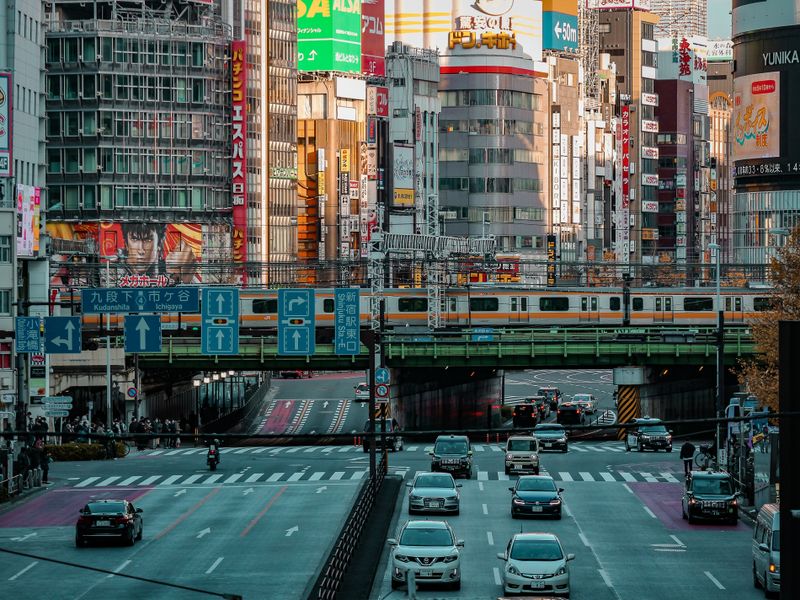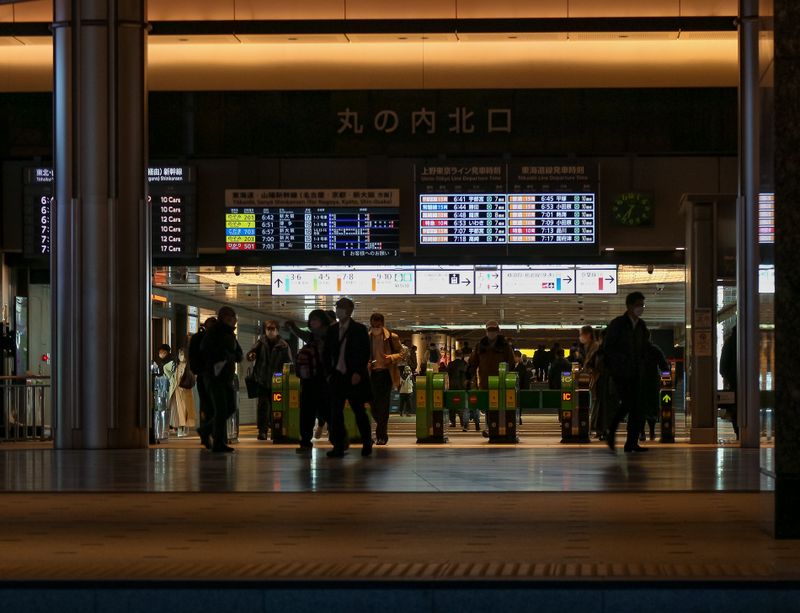Jul 19, 2023
Japan's busiest train station topped 600,000 daily passengers in 2022, JR East
Average daily rail passengers using JR Shinjuku station in Tokyo topped 600,000 in FY2022 making it the busiest train station in the East Japan Railway Co. network, according to data released by the company in July.
Shinjuku station was by some distance the busiest train station by daily passenger number in 2022 with an average of 602,558 passengers each day at the station using trains operated by the company better known as JR East. The number of passengers at Shinjuku was up 15.4 percent compared to the previous year as travelers and commuters began to emerge from the pandemic.

(Train passing through Tokyo's busy Shinjuku district.)
All of the 100 busiest train stations that fall under the JR East network saw an increase in daily passenger numbers compared to the previous year.
The number of passengers using Shinjuku station in 2022 was still some way off pre-pandemic levels, however, with the station handling travelers using JR East trains to the tune of 789,366 on average each day.
Shinjuku topped the list of busiest train stations in the network ahead of Ikebukuro station (458,791 daily passengers) and Tokyo station (346,658 daily passengers). Yokohama - with 340,536 346,658 daily passengers the fourth busiest station - and Omiya - with 226,249 daily passengers the seventh busiest station - were the only two train stations outside of Tokyo to feature in the top 10 stations.
Nishi-Ogikubo, in Tokyo’s Suginami Ward, was the 100th station on the list with an average of 39,636 daily passengers in 2022.

(Travelers pass through the gates of Tokyo station, the third busiest train station in the JR East network in 2022.)
JR East also released data on the busiest train routes in their network for the same year based on the average number of passengers per kilometer per day.
A 20.6-km section of the Yamanote loop line in central Tokyo between Shinagawa and Tabata stations (via Shinjuku) was found to be the busiest JR East route handling 872,143 daily passengers in 2022. The same route transported 1,121,254 daily passengers in 2019, according to the data.
A 5.5-km section of the Saikyo line between Ikebukuro and Akabane stations was found to be the second busiest route with an average of 629,849 daily passengers. The Tokaido Main line between Tokyo and Ofuna (Kanagawa) stations and Shinagawa and Tsurumi (Yokohama) stations saw an average of 511,926 passengers making it the third busiest of JR East’s routes.
The JR East railway network extends from central Japan and the Kanto region through Japan’s northern Tohoku region on the island of Honshu.
Shinjuku station - which commonly refers to the main JR station and adjacent stations operated by private railways - is recognized by Guinness World Records as the world’s busiest station by passenger use with an estimated average of 3,590,000 passengers per day in 2018.
Shinjuku station is notorious among travelers for its many exits (as many as 200, according to many guides) and underground passageways. The station was ranked as the second most popular train station in Japan by foreign visitors according to an edition of television network TV Asahi’s “senkyo” election program broadcast in April.
10 busiest train stations in Japan - JR East data for FY2022
| Station | Av. daily passengers in 2022 | Av. daily passengers in 2018 | |
| 1 | Shinjuku | 602,558 | 789,366 |
| 2 | Ikebukuro | 458,791 | 566,994 |
| 3 | Tokyo | 346,658 | 467,165 |
| 4 | Yokohama | 340,536 | 423,651 |
| 5 | Shibuya | 292,631 | 370,856 |
| Station | Av. daily passengers in 2022 | Av. daily passengers in 2018 | |
| 6 | Shinagawa | 248,650 | 383,442 |
| 7 | Omiya | 226,249 | 258,108 |
| 8 | Shimbashi | 193,244 | 281,971 |
| 9 | Akihabara | 190,506 | 252,267 |
| 10 | Kita-Senju | 183,824 | 220,903 |
Related
And the most popular train station in Japan is? TV show asks foreigners



0 Comments